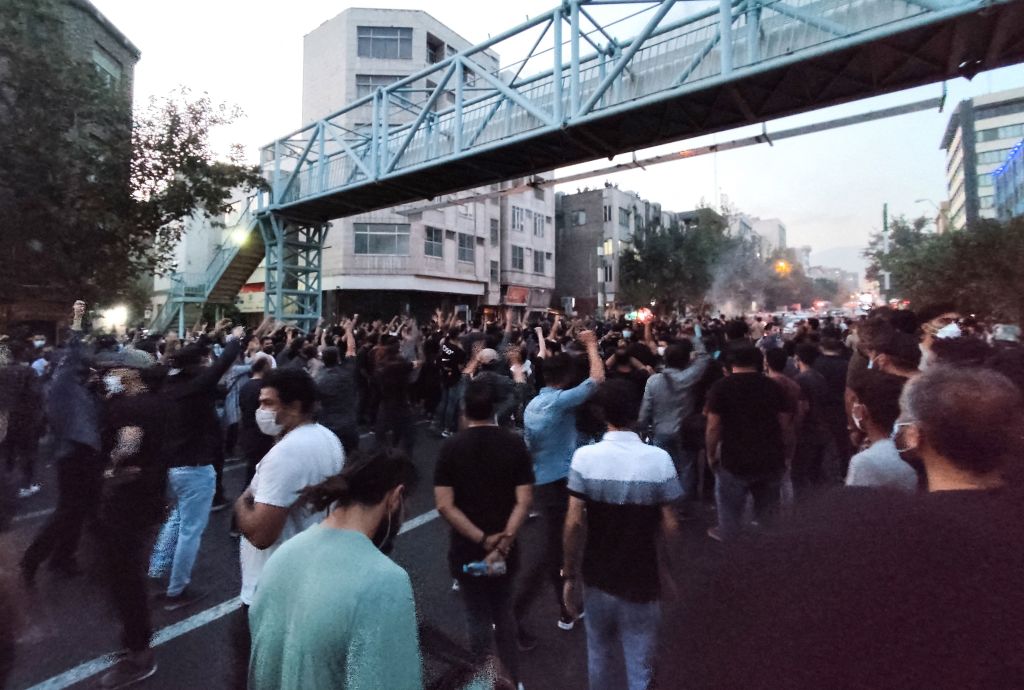A wave of protest is sweeping across Iran. Sparked by the death in police custody of Mahsa Amini, a 22-year-old who allegedly contravened oppressive and arbitrary laws on veils, demonstrators are taking to the streets in towns and cities across the country.
Ever since Ebrahim Raisi became president last summer in a widely derided Potemkin election, a crackdown on those who refuse to wear the veil has been gathering pace, with women manhandled and harassed by Iran’s notorious ‘morality’ police. Raisi regards veiling as the frontline in a continuing cultural war against western moral corruption, which he clearly feels Iran is losing.
But now the crackdown on the veil has backfired. Since Amini’s death there have been five successive days of unrest in multiple cities, with women burning their veils in public and at least seven killed since the protests began. The fragility of a state gripped by paranoid delusions of religious sanctity is being exposed.
The thuggery of the morality police is offensive to many ordinary Iranians
The regime has clearly been surprised by the depth of the anger following Amini’s death, even if it has reacted in predictable ways. It first suggested a tragic accident had taken place and sought to provide ‘evidence’ in support of this: clumsily edited CCTV footage which purports to show Amini suddenly collapsing in a police station. Given the level of distrust which exists between state and society this effort was unlikely to pass muster. Few believed that the images of Amini lying in a coma came from anything but the beating she had received at the hands of the authorities.
Now the regime is applying the tried and trusted methods of repression instead. Rather than attempting to contain the protests in the hope they will eventually to burn out, the authorities are pursuing a strategy of terrorisation, with random people attacked and their property smashed. This is not just to create a sense of fear but also to justify the need to eventually ‘restore order’. The authorities are also parroting the familiar mantra that foreigners are fomenting and/or exploiting the country’s ills.
The trouble facing the regime as it encounters protests with unerring frequency (the last two serious protests were in 2017 and 2019) is that it is becoming increasingly difficult to rule by fear. Protestors have become bolder, their slogans more explicit. Back in 2009, during the high tide of the Green Movement protests, a taboo was broken when protestors began openly condemned the country’s Supreme Leader, Ayatollah Khamenei. But even then many believed that reform of the system was better than its overthrow.
These days no such distinction remains. People are angry and have little to lose. They chant for liberty and ‘taking Iran back’. In 2009, when security personnel were captured by protestors, there were attempts (not always successful) to treat the officials with a measure of compassion. This is no longer the case. People are fighting back. Violence has been a feature of Iranian protests for some years, but it is becoming more extensive and prevalent.
Meanwhile it is remarkable that a revolution that prided itself on being a defender of the country’s cultural ideals should have itself become so culturally illiterate when it comes to its own people and its enforcement of the veil.
It is the crass misogyny of the regime and its arbitrary exercise of violence that is the cause of much of the recent anger in Iran. Men are increasingly joining the protests. Many feel horror that their wife, daughter or mother could be treated in such an appalling manner, subjected to physical violence and verbal abuse. The thuggery of the morality police is offensive to many ordinary Iranians.
The options facing the regime are limited. It has painted itself into an ideological corner. To concede ground now would be to reveal its weakness. The only option open to Iran’s leaders is escalation, though this is unlikely to happen while President Raisi is in New York for the UN General Assembly. We can expect the temperature to rise on his return.
The protests may in time subside, but they will not disappear. Of one thing we can be certain. The Islamic Republic has (to paraphrase Tallyrand) learnt nothing and forgotten nothing. Cloaked in a thick veil of sanctimonious piety the regime will commit further outrages, eliciting further protests in a depreciating cycle of escalating violence which is likely to get worse before it gets better.






Comments